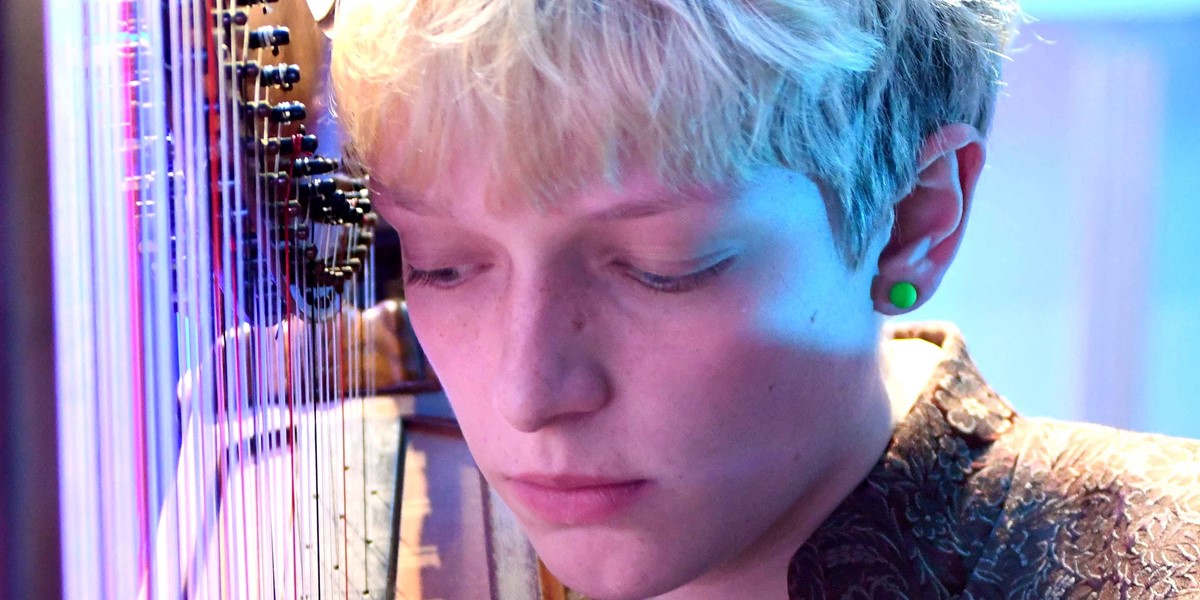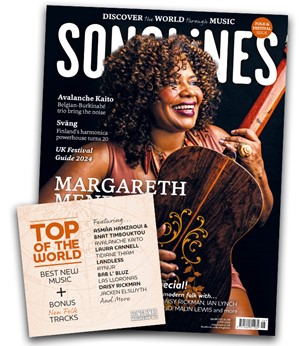Friday, February 3, 2023
Cerys Hafana: “The sea is going up in flames, the angels are raining down from the heavens”
Cerys Hafana talks to Russ Slater about the uniqueness of her triple harp and its bridging of the historical, the profound and the personal

©Stuart Ladd
Cerys Hafana remembers her mum asking her if she’d like harp lessons. “I said ‘more than anything in the world!’ I don’t know why I said that,” she laughs. She started on a lever harp but upgraded to triple harp a few years later, learning from “one of the only people in Wales who still teaches it.”
The triple harp dates back to 16th-century Italy, but became hugely popular in the baroque period, when it first appeared in Britain. “For some reason,” says Hafana, “the people who really took to it in London were the Welsh, who played it in courts for posh Londoners and then took it back to Wales. It then died out everywhere, apart from in Wales.” It gets its name from having three rows of parallel strings instead of one. “The triple harp has the two outside rows, which are the white [natural] notes, and you have two of every note, and then the middle row is the black [flat and sharp] notes,” she tells me. The black notes mark it out from other harps, which use pedals and levers to achieve flats and sharps. But it’s the two outside sets of strings that allow for the triple harp’s unique effect of doubling that Hafana loves. “It creates a whole world of effects that you can’t get on any other type of harp or many other instruments.”
Hafana, who also sings, uses this technique to full effect on her recently released second album, Edyf. This record marks a staggering evolution from her 2020 debut, which was made up of what she says are “fairly well-known Welsh folk tunes.” She wanted to give the new album her own identity, deviating from the typical triple harp repertoire, while also finding something personal. “I started looking in the National Library of Wales’ archives for tunes and words that no one has sung for 200 years. I was looking for things that were a bit weird, and I wanted to see if there were some themes that were still relevant.” She found a catalogue called The Ballads Database and a collection of songs from “some guy who went around Wales writing songs down, but didn’t really know how to write down music.” This research led her to finds such as ‘Comed 1858’ (“about a guy going up a hill to watch a comet go past in 1858”), ‘Tragwyddoldeb’ (“a hymn about eternity” that reminded her of discovering that “the universe is infinite”) and ‘Y Môr O Wydr’ (“a hymn about doomsday… the sea is going up in flames, the angels are raining down from the heavens. It’s bonkers, so intense”). It was the last of these that drew me into the album. The chief instrument on the track is bowed double bass, with Hafana playing a treated harp. “I’ve got paper weaved around the strings so it sounds distorted. It completely deadens the sound; it’s not obviously a harp.” The technique was learned from Nansi Richards, Wales’ own ‘Queen of the Harp.’
It’s this need to experiment, to “kill all of the prettiness of the sound,” and her choice of material – the album also includes three original tracks – that mark Hafana out. She may be playing a baroque choral instrument and singing words from 18th-century hymns, but her music is not an artefact; it’s full of emotion and purpose and, when it hits you right, a raw power, which is quite an achievement from a harp.
Read the review of Cerys Hafana’s Edyf
This interview originally appeared in the January/February 2023 issue of Songlines. Never miss an issue – subscribe today

